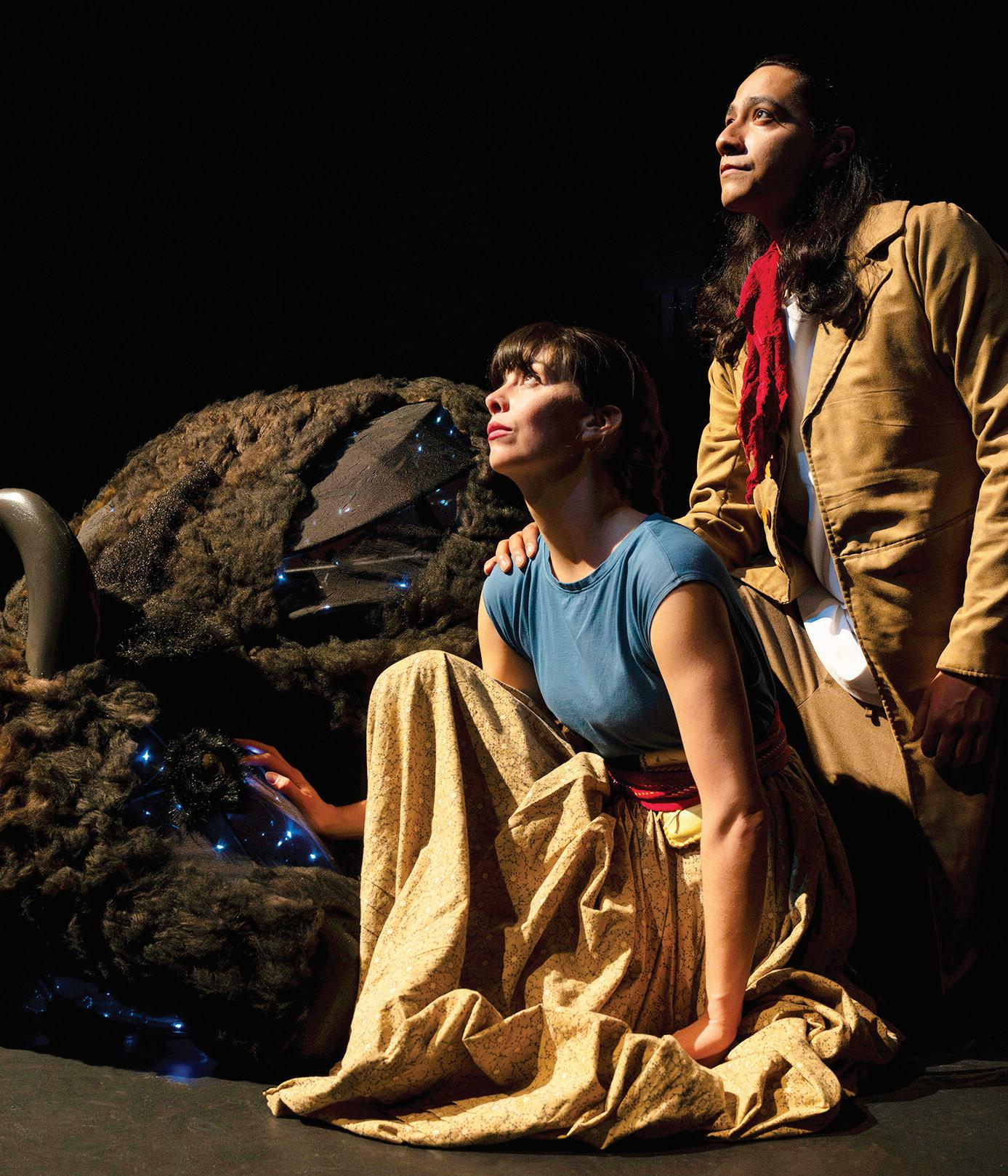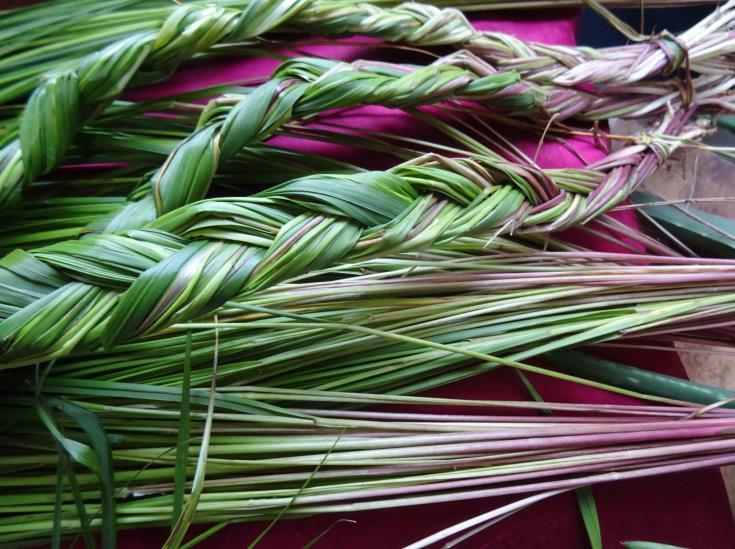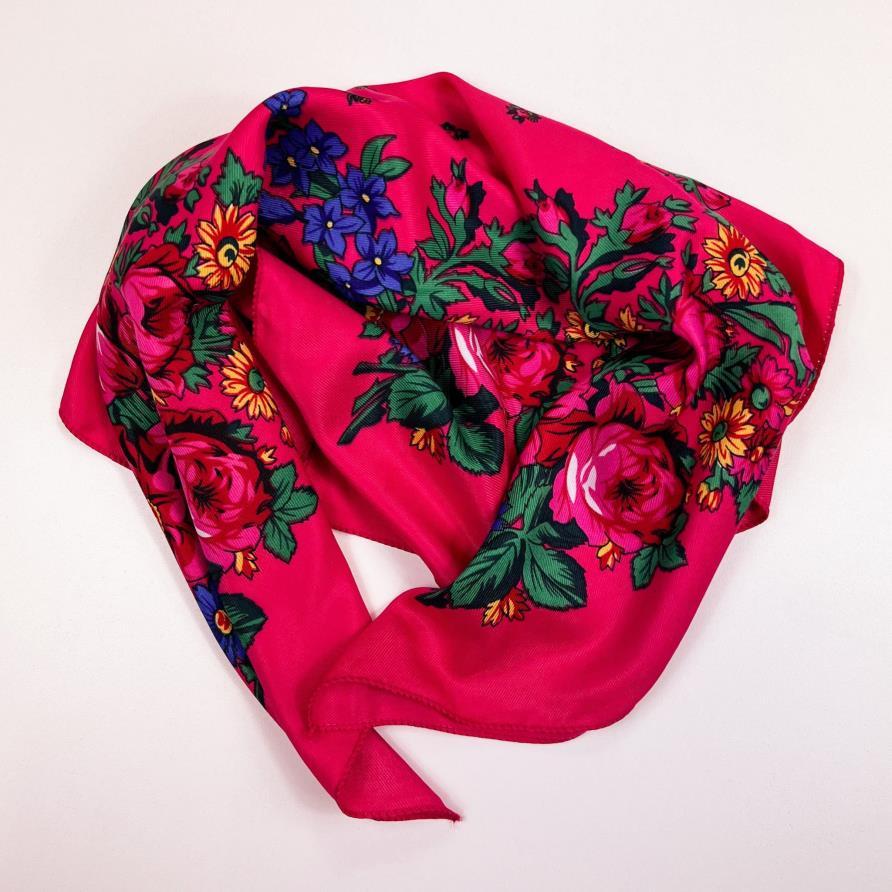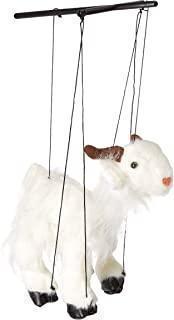AN AXIS THEATRE PRODUCTION
BY TAI AMY GRAUMAN

BY TAI AMY GRAUMAN


This Study Guide includes suggestions about preparing your students for a live theatre performance to help them get the most from the experience. Included is a synopsis of the show, pre and post-show activities, origins of the story, drama games, and ideas on how to use the performance to enhance aspects of your education curriculum. The exercises within are designed to help students and instructors - all those who use it -respond to the themes and the dramatic and musical elements presented in the play.
Please print and copy this guide for your students and fellow teachers.
» Written by Tai Amy Grauman - Directed by Amanda Testini and Chris McGregor
» Scenic Design and Puppet Design and Build by Dusty Hagerüd - Set Build by Amy Harris.
» Costume Design by Alaia Hamer. - Costume Build by Darryl Milot.
» Fiddle Recordings by Kathleen Nisbet. - Sound Design by Chris McGregor
» Lighting Design by Jack Goodison. - Choreography by Eloi Homier.
» Cultural Consultant Andrea Menard.
» Performed by Lynny Bonin, Izzy Bull Bear and Danica Charlie (Cassandra Bouchier)
» Stage Managed by Jessica Adamson.
Please contact the Axis Theatre Company office for more information
LOCAL: 604 669 0631 TOLL FREE: 1 866 294 7943
EMAIL: petrice@axistheatre.com WEBSITE: www.axistheatre.com

First identified in relation to English 12 First Peoples, the following First Peoples Principles of Learning generally reflect First Peoples pedagogy.
● Learning ultimately supports the well -being of the self, the family, the community, the land, the spirits, and the ancestors.
● Learning is holistic, reflexive, reflective, experiential, and relational (focused on connectedness, on reciprocal relationships, and a sense of place).

● Learning involves recognizing the consequences of one’s actions.
● Learning involves generational roles and responsibilities.
● Learning recognizes the role of Indigenous knowledge.
● Learning is embedded in memory, history, and story.
● Learning involves patience and time.
● Learning requires exploration of one’s identity.
● Learning involves recognizing that some knowledge is sacred and only shared with permission and/or in certain situations.
Because these principles of learning represent an attempt to identify common elements in the varied teaching and learning approaches t hat prevail within First Peoples societies, it must be recognized that they do not capture the full reality of the approach used in any single First Peoples society.
See https://www.fnesc.ca/ for more Indigenous Edu cation resources.
"My people will sleep for one hundred years, but when they awake, it will be the artists who give them their spirit back.”
~ Louis Riel - 1855
Some students may struggle to follow the performance if this is their first time at the theatre or if they are unfamiliar with names and languages that are uncommon for them. This section is designed to help teachers prepare their students for a theatre en vironment and provide background for the show they are about to watch.

Talk about the similarities and differences between watching a movie, a television show, and a live theatre presentation. Include discussions about how the performers prepare for their role(s) in each situation. For instance, an actor in a movie or a television show can redo a scene if a mistake is made versus an actor in a live performance, who must continue with a scene regardless of mistakes. Discu ss how an audience can influence each type of performance.
Remind your students to notice the way that the set, costumes, and live music help make the performance of Where Have All The Buffalo Gone? exciting and engaging!
Next, prepare your students for watching a live performance by discussing the characteristics of a positive audience member.
- S - Sit quietly. Will sit quietly so everyone around can see and hear the performance.
- E - Ears open. Will listen attentively and remain focused on the actors and musicians and will not distract performers by moving about or by waving or calling out to performers.
- A - Applaud. Will laugh and applaud appropriately.
- T - Think before you speak. Will contribute to the performance when asked. Have respect for those around you and the performers on stage.
The play takes the audience through the emergence of the Métis Nation across the plains, then leads into the robust colonization that arises from th e fur trade, the disappearance of the buffalo, as well as the political uprising of the Métis Association of Alberta in the 1930s. The story starts in creation among the stars and ends in 2024.

Where Have All The Buffalo Gone? follows two souls through se ven different periods of Métis history. Please note that the characters introduced in each new time period are not necessarily related by blood or across time. There are many “Maries” and “Louies” in recorded Métis history and though they are inspired by t he playwright’s ancestors, they are fictional characters. With the expectation of Louis Callihoo, who is based on the real relative of the playwright and is most well-known as “The Sun Traveller”.
The play is broken into seven scenes. Below is an outline o f the time periods and the main historical events that each scene features. The listed historical events are further explored in the “Origins of the Story” section of this guide.
1. Among the Stars - Reference to Métis creation story.
2. 1830 - The Fur Trade
3. 1885 - The Riel Resistance (Red River Resistance)
4. 1915 - Great War (World War I)
5. 1925 - Residential Schools
6. 1935 - The Great Depression and The Indian Act
7. 2025 - Contemporary Métis
There are three performers who play different characters in each scene. In theatre, this is called a “track”. A “track” is like a path a performer follows around the stage during the play; this can include changing costumes and sets, or sometimes character s. In this show there are three tracks.
TRACK 1: Iskwewo / Marie / Rose
TRACK 2: Napew / Louis / Jean / John
TRACK 3: Buffalo
Love: Why love stories? Despite a politically tumultuous and conflict -ridden history, one could say that the Métis sprung up out of romance. Indigenous women and European men fell in love or married to make better connections with Indigenous communities. Why do you think the playwright chose to frame Métis history through love stories?
Fate: The idea of a coincidence is introduced in the first scene of the play. For Iskwewo and Napew, they question whether it is a coincidence that Iskwewo dreamed of the same flo wer that Lii Buffalo found. A coincidence is a causal connection or happenstance that occurred in nature, whereas fate is less casual. Inferring an event or connection occurred by fate is saying that everything happens for a reason and beyond a person’s co ntrol.

There are other real life coincidences in Métis heritage like Lii Buffalo finding the flower from Iskwewo’s dream. A well-known one is that of the Bison -discovered petroglyphs at the Wanuskewin Historical Site, the site of a historic buffalo jump, o utside of Saskatoon, SK. Read more about the discovery here: LINK
Métis Nationality / Identity: The “Métis” noun can mean a few things: the first is that it refers to the Métis Nation that arose across the plains of North America before the expansion of the Dominion of Canada in the West (specifically what we know today as AB, SK, MB, and parts of ON). The Métis grew from intercultural marriages between European (includ ing British) fur traders and First Nations women. The Métis were seen as mixed -race and were not accepted in Native or White communities, which led them to eventually form their own settlements. Out of these communities a culture interwoven with Cree and F rench customs and language (Michif) emerged and we know them now as uniquely Métis (which would have been pronounced like Michif). Métis history and culture are further explored in the “Origins of the Story” section of this guide.
The second meaning of the noun Métis is ‘a person of mixed blood’, meaning a person with part non-Indigenous and part Indigenous ancestry. Using the term Métis for a person with mixed ancestry who does not have ancestral ties to the Homeland of the Michif -Métis has historically been controversial. Why is that? “Métis” is a French word that describes mixed Indigenous peoples and because of its European origin, many people feel justified to use it to describe themselves. (Teillet, 473) Take the Acadian Métis for example: they descend ed from early French Acadian Settlers and Indigenous Mi’kmaq people of Southwest Nova Scotia. The history explored in Where Have All The Buffalo Gone? and this guide focuses solely on the Michif speaking Red River Métis.
Nimama: Plains Cree for ‘my mom, my mother’.
Faam: Michif for ‘woman’.
Lii Buffalo: Michif for ‘the buffalo’.
Lii Riviere: Michif for ‘the river’.
An Nom: Michif for ‘a man’.
Kisahkitin: ‘I love you’ in Plains Cree.

Métis: The Métis are a distinct Indigenous people w ith a unique history, culture, language, and way of life. The Métis Nation is composed of descendants of people born of relations between First Nations women and European men. ( source)
Cree: Cree are the most populous and widely distributed Indigenous peoples in Canada. Cree First Nations occupy territory in the Subarctic region from Alberta to Quebec, as well as portions of the Plains region in Alberta and Saskatchewan. (source)

Cree traditional territory. (courtesy Native Land Digital / Native-Land.ca)
Michif: Language created by the voyageurs to communicate with First Nations. It is a mixture of French, Cree, and Ojibwa.
Halfbreeds: Term used by English speaking Settlers in the 18th-19th c. to typically describe English-Métis. This term is a derogative and is n o longer used.

Mohawk: The Mohawk people are the most easterly section of the Haudenosaunee, or Iroquois Confederacy. They are an Iroquoian -speaking Indigenous people of North America, with communities in southeastern Canada and northern New York State, primarily around Lake Ontario and the St. Lawrence River. ( source)

Mohawk traditional territory. (courtesy Native Land Digital / Native-Land.ca)
Nehiyaw: Plains Cree for ‘a native of the Cree nation’.
Kokum: ‘Grandmother’ in Cree.
Scrip: Vouchers for land given by the Government of Canada.
Ackakosak: Plains Cree for ‘star’.
Otipemisiwak: A Plains Cree word that has been used to describe the Métis people, meaning “those that rule themselves.” (source)
L’inetoile (or aen nitwel): Michif for ‘star’.
Maarsi: Michif for ‘thank you’.
Étoile: French for ‘star’.
Sweetgrass: Sweetgrass is a fragrant grass with long, satiny leaves. Also known as vanilla grass, manna grass and holy grass, it is well known to many Indigenous peopl es in Canada and the United States as a material for baskets, as well as a scent, medicine and smudge. ( source)


Métis sash: The Métis sash is a colourful finger -woven belt that is usually three -meters long. It is sometimes referred to as L’Assomption sash or Ceinture Fléchée (arrow sash). The sash was used by the Voyageurs of the fur trade and was quickly adopted by their Métis sons. They used the sash as a belt to hold coats closed, and also as a towrope, tumpline, towel, and even a sewing kit. The Métis sash became the most recognizable part of the Métis dress a nd a symbol of the Métis people. Today, the sash continues to be an integral part of Métis culture and heritage. Learn more. (source)

Kokum scarf/shawl: “ [...] Ukrainian floral scarves have become iconic among many Indigenous Nations. These days, you’ll even see these scarves integrated into pow wow regalia. Us nehiyawak (Cree people) call them “kokum scarves” because kokum means “your grandmother”, a reminder of our grandmothers and a symbol that we carry them with us, when we need them the most.

So, why the floral scarf? On the prairies, there is a vast hist ory of trade and commerce between Indigenous Nations. But what people may not recognize is the history of trade and cooperation between the original peoples and settlers. In fact, the Ukrainian and Cree communities often worked closely together during time s of major hardship and famine. Cooperation like this, between Indigenous Nations and newcomers, is a story that is found over and over again across Turtle Island. It was because of this trade, commerce, and cooperation that floral scarves became a symbol of the strength and hard work of our matriarchs.
Long ago, when Ukrainian people arrived in this territory, they brought with them beautiful floral patterned fabrics that were a natural complement to the floral patterns found in Cree, Dene, and Métis beadwork. Our grandmothers adopted these patterns as t hey worked closely with their new neighbours to help each other. I guess that also explains why feasts in my community usually feature foods such as pierogies, and cabbage rolls, alongside our traditional foods.” (source)


Red River Jig: The Métis jig is a combination of First Nations dancing, Scottish and FrenchCanadian step-dancing, and reel, jig, and quadrille steps. The "Red River Jig", or as it is known in Michif, "oayache mannin," is the most famous Métis dance. This jig is a special fiddle tune that is played at almost all Métis functions and is danced in two parts. In the first part, a traditional jig step is performed while the fiddle plays a high section, then the fid dle switches to a lower section, and the second fancy footwork part of the dance is performed. ( source)
Watch Red River Jig on Canada’s Got Talent: IFMD Audition WOWS The Judges With Their SPEEDY DANCE MOVES | Canada's Got Talent
Learn to Jig:
Cultural Video Series: Indigenous - How to Métis Jig
Buffalo:
The buffalo hunt was the means by which Plains and Métis peoples acquired their primary food resource until the collapse of the buffalo, or bison, herds in the 1880s. The hunt was crucial to sustaining the fur trade activity that precipitated and supported European settlement. Buffalo were extremely plentiful in North America, with peak population estimates ranging in the millions. Single herds were described by early 19th century observers as including tens of thousands of animals, but by the late 19th cen tury their numbers were in the low hundreds, to the extent that perhaps less than 100 remained. ( source)

Tai Amy Grauman (MFA) is Métis Cree with ties to Haudenosaunee voyageurs from Ardrossan, Alberta. She is a Callihoo as well as a Beauregard and her family comes from a community in Alberta formerly known as St. Paul des Métis. She is the first elected Provincial Women’s Representative as part of the first Otipemisiawk Government Metis Government within Alberta as well as the secretary of advancement of women and girls. Tai is a playwright, actor, director and producer.


In this video about the Métis people, little Rosie does an excellent job of providing an overview of Métis history. Watching this with your classes prior to or post show will give them an understanding of the various generations of Mé tis people and the struggles each has encountered.
The Metis People: Kid's Version - Rosie Darling - A "Metis Younger" : )
( SOURCE 1 , SOURCE 2 , SOURCE 3 , SOURCE 4)
11th Century - Vikings voyage to North America. (source)
1492“He sailed the ocean blue.” Christopher Columbus voyages to the Americas.
17th Century - Fur Trade emerges.

1670 - Hudson Bay Company incorporated, leading trade in what was known as Rupert’s Land.
1760 - 1870 - Fur Trade emerges in Alberta.
1831 - First residential school opens in Brampton, Ontario (Mohawk Institute).
1867 - Modern Canadian Constitution signed (only includes Ontario, Quebec, Nova Scotia, New Brunswick).
1869-70 - Canada expands in the Métis homeland with the Manitoba Act (1870).
The Métis are promised, among other things, 1.4 million acres of land for their children. The Crown fails to fulfill this promise honorably.
Red River Resistance: The Red River Resistance (also known as the Red River Rebellion) was an uprising in 1869 –70 in the Red River Colony. The resistance was sparked by the transfer of the vast territory of Rupert’s Land to the new Dominion of Canada. The Métis mounted a resistance and declared a provisional government to negotiate terms for entering Confederation. The uprising led to the creation of the province of Manitoba, and the emergence of Métis leader Louis Riel a hero to his people and many in Quebec, but an outlaw in the eyes of the Canadian government.
1870-85 - Métis nation petitions for its rights.
Following the incorporation of the Northwest Territories into Canada, dozens of petitions were sent to the federal governme nt asking that Métis land rights in the territory be formally recognized. Canada’s responses are non -committal. Métis want title to their lands to be formally recognized so that they are not disposed of by newly arriving Euro-Canadian settlers, as happened in Manitoba following the Red River Resistance.
1885 - Northwest Resistance
In the face of Canada’s failure to fulfill its promises to the Métis or to respect their rights, the Métis established the Provisional Government of Saskatchewan, under the leadership of Louis Riel and Gabriel Dumont. Canada crushes the Métis government in what is remembered as the Battle of Batoche. Louis Riel is captured and later executed.
Indigenous studies scholars and many historians refer to the Métis and First Nations uprisings as resistances. This frames them as reactions against European colonization. This is because Métis and First Nations established self -governance on their own land long before Rupert’s Land was transferred to the Dominion of Canada.
1885 - 1908 - Scrip
Beginning in 1885, Canada offered scrip (a certificate traded for land or money to purchase land) to Métis residing in the Northwest Territories, including present -day Alberta. The scrip system was rife with fraud and abuse. The bulk of scrip ends up in the hands of land speculators; the Métis receive next to nothing for it. The Supreme Court of Canada has said that “the history of scrip speculation and devaluation is a sorry chapter in our nation’s history.”
1918 - Women got the right to vote.
1932 - Métis Association of Alberta

In 1932, the Association des Métis Alberta et les Territoires du Nord -Ouest was organized more formally and became the Métis Association of Alberta (MAA), including 31 locals across Alberta. Joe Dion was its first president, with Malcolm Norris, Felix Callihoo, and Pete Tomkins serving as vice -presidents, and James Brady as Secretary Treasurer. They advocate to alleviate Métis poverty and create a secure Métis land base in Alberta.
1960 - First Nations were given the right to vote without giving up treaty rights.
1961 - Métis Association of Alberta formally registered.
Under the leadership of Adrian Hope, the MAA formally registers as an association under provincial legislation, giving the MAA access to federal funding. The organiza tion is revitalized. Membership is open to any “Metis, non -treaty Indian, or any person of mixed White and Indian blood.”
1996 - Last residential school closes.
Red River Colony

The Red River Colony was founded in 1812 by Thomas Douglas, 5th Earl of Selkirk. It was initially populated by Scottish settlers. It was located at the confluence of the Red and Assiniboine Rivers (what is now downtown Winnipeg). The area had been a rendez vous location for the fur trade for many years. The Northwest Company arrived there to build Fort Gibraltar in 1809. The Hudson’s Bay Company had earlier established a small depot across the river, at what is now St. Boniface. The Assiniboine (Nakoda) peop le had previously controlled access to the area. By 1812, it was also home to Ojibwe, Cree traders and Métis buffalo hunters. Most Métis were the descendants of French and English voyageurs and coureurs de bois. They had come west with the fur trade and se ttled among Indigenous communities.
After 1836, the colony was administered by the Hudson’s Bay Company (HBC). It was then populated mainly by francophone and anglophone Métis people.
Rupert’s Land
The land that Britain loaned to the Hudson Bay Company. ( source)

The Métis community of Batoche is a national historic site in central Saskatchewa n. It was the scene, in 1885, of the last significant battle of the North -West Resistance, where Métis and Indigenous resistors led by Louis Riel and Gabriel Dumont were defeated by federal government militia, effectively bringing an end to the uprising. ( source)

Louis Riel, circa 1873.
(courtesy Provincial Archives of Manitoba/N-5733)

Louis Riel, Métis leader, founder of Manitoba, central figure in the Red River and North -West resistance (born 22 October 1844 in Saint-Boniface, Red River Settlement; died 16 November 1885 in Regina, SK). Riel led two popular Métis governments, was central in bringing Manitoba into Confederation, and was executed for high treason for his role in the 1885 resistance to Canadian encroachment on Métis lands. Riel was initially dismissed as a rebel by Canadian historians, although many now sympathize with Riel as a Métis leader who fought to protect his people from the Canadian government. (source)
The Métis became a very poor people when Canada took over thei r homelands. They were kicked off their lands and forced to live in road allowances. Many were illiterate.
The Road Allowance period (roughly 1900-1960) is a key but little-known element of Métis history and identity. As immigrant farmers took up land in the Prairie provinces after the 1885 Northwest Resistance, many Métis dispersed to parkland and forested regions, while others squatted on Crown land used or intended for the creation of roads in rural areas or on other marginal pieces of land. As a re sult, the Métis began to be called the “road allowance people,” and they settled in dozens of makeshift communities throughout the three Prairie provinces, such as Saskatchewan’s Spring Valley along the fringes of Prince Albert National Park, Chicago Line or “Little Chicago” in the Qu’Appelle Valley, and Manitoba’s Ste. Madeleine and Rooster Town (Winnipeg). Road allowance houses reflected the Métis’ extreme poverty houses were usually uninsulated, roofed with tar -paper and built from discarded lumber or logs and various “recycled” materials. These small one- or two-room dwellings housed entire families. (source)
The Indian Act is the primary law the federal government uses to administer Indian status, local First Nations governments and the management of reserve land. It also outlines governmental obligations to First Nations peoples. The Indian Act pertains to people with Indian Status; it does not directly reference non -status First Nations people, the Métis or Inuit. First introduced in 1876, the Act subsumed a number of colonial laws that aimed to eliminate First Nations culture in favour of assimilation into Euro -Canadian society. A new version of the Act was passed in 1951, and since then, has been amended several times, most significantly in 1985, with changes mainly focusing on the removal of discriminatory sections. It is an evolving, paradoxical document that has enabled trauma, human rights violations and social and cultural disruption for generations of Indigenous peoples. ( source)

One of the Iroquois that came west was Louis Kwarakwante of Sault St. Louis. He was also known as Louis Callihoo or Louis l’Iroquois. In 1800, when he was 18, he signed on for two years with the North West Company. Louis then went with a group of some 40 Iroquois men to the Hudson’s Bay Company’s Fort des Prairies (Edmonton), staying with that company until the 1840s. Once his formal contract was completed, he became a “freeman”, continuing to hunt and carry freight on a freelance basis. These freemen mostly associated with other freemen and their families, forming their own extended family groups.
Louis first married Marie Katis, a Sekani woman, and had eight children with her. Louis’s second and third wives were two Métis sisters, Josephte and Marie Patenaude, He had another two and seven children respectively with each. He settled with some of his extended family in what is now Jasper National Park. Louis died around 1846 and was buried in the Wilmore Wilderness area. The number of his descendants continued to grow, spreading out to establish and join many other communities. (source)
The full history of Louis Callihoo can be found in Elizabeth Macpherson’s book “The Sun Traveller”
Now that your students have seen Where Have All The Buffalo Gone? it is the perfect time to expand on their excitement and interest in drama and music and to discuss ideas and themes presented in the performance.
There are a variety of ways for students to respond to, reflect on and analyze dramatic and musical performances: for example, through discussion, writing, storytelling, art, singing, and playing drama games.

The following suggested activities will help to engage your students to have fun and laugh while building critical thinking skills, self -awareness, and confidence. Choose the activities that are best suited to your grade level and please add your own activities or modify those provided to meet the needs of your students.
The following questions can be used for whole group discussions or for sharing with a partner or in a small group. After sharing with a partner or small group, students can take turns sharing ideas with the whole group.
If using the questions as sentence starters for a writing activity, the students can also draw pictures to accompany their writing.
- Which character is your favorite? Why?
- What was the most interesting part of the performance?
- What did you like about the Where Have All The Buffalo Gone? puppet?
(SUGGESTED GRADE: 4 - 12)
Have students retell the story using their creativity and imagination. For younger students, you can provide loose parts and black mats as part of storytelling workshops and have students tell their story to you while you scribe for them. For older students, they can write a short summary of their favorite scene of the play or create a short skit in groups. Encourage your students to be as creative as possible!

A sharing circle or a community circle is a way to gather the class to share or discuss a topic. This is a good way to start the day or to facilitate a beginning of a class di scussion. You may also bring in or create an item such as a special rock or stick as a symbol of a “talking” object. During circle time, pass the object along to everyone in an orderly manner. Explain to the class that the person who has the talking object is the only one who should be talking or sharing ideas. The rest of the class are paying attention by caring and listening. Here are some sample questions or topics you may choose:
- What did you like about the play?
- What did you learn from the play?
- What makes a community close -knit?
- How can you build an inclusive and caring classroom environment? Think about the ways you talk and listen to each other.
Grades 4 - 6
1. What is a colony? Where can you find colonies in nature?
This question is intended to help students visualize the scale and power of a colony. Some examples include insects, berries, bacteria, and settlements.

2. What is the purpose of a colony? Take ants as an example. How does each ant help support the colony? Think about how certain ants have specific jobs.
This question is intended to help students create connections between societal roles and how a collective can work towards a common goal.
3. RESEARCH QUESTIONS: How did British Columbia get its name? How did Canada get its name?
Grades 7 - 12

1. Can you think of any other colonized countries (ex: Australia, United States of America, India, South Korea, Philippines, etc.)? Do you know of any examples of cultural and/or ethnic groups that have resulted from being colonized?
2. What is the difference between colonizing and invading? How are these different from immigrating or emigrating?
3. Have you seen or read about present-day examples of colonization?
4. What is preservation? Why is it important for people like the Métis?
Ask individual or small groups of students to focus on the following components of the play:
● What iconography did the students see in the set?

● What were the different places that the set represented (e.g. space, the past, the present)?
● How did the actors use the set to represent the various places in the story?
● How did the actors use the set to communicate what they were doing?
● How was the puppet incorporated into the set?
● What different ways did the actors represent their characters? What were the different characters and animals/creatures portrayed by the actors?
● How do the actors change from one character to another? What techniques were used to do this?
● How did the music and sound effects suggest different locations and how did the recorded music create mood and atmosphere?
● How did the actors create sound effects with their vocal sounds, body percussion, or found objects?
1. In a circle, have students share, one at a time, appropriate body sound possibilities. For example:
● Suggest an environment and have students each create and share a sound found in it (i.e. the forest, the river, by the ocean). Discuss and experiment with changing dynamics, volume, tempo, and colour.
2. In the play, there are several locations described that inspire sound. Give small groups of students locations or situations from the play and ask them to create a soundscape.
With your students, get into a seated circle and go around the circle one by one having each person say “ha” once, then another round twice. Continue adding a “ha” each round until everyone cannot hold their real laughter. Another version is to start laughing, keep laughing and encourage everyone to do the same. Eventually everyone will be laughing for re al.

A game of mirrors is a great group activity that gets students working together and paying close attention to each other. Have the students pair off in partners around the classroom, one person is A the other is B. To begin, A will be the leade r and B the mirror. The two partners face each other, and partner A begins to move and partner B will mirror everything that partner A does. When the teacher calls out “freeze” everyone must pause, then call out “switch”, then partner B will become the act or and partner A will be the mirror. Do this a few times throughout the activity.
Ask your students to get in a circle, one person is in the center doing a mimed activity, someone jumps in and asks, “What are you doing?” The person in t he center says something different from what they are doing; the person who jumped in mimes that new activity. Example: the person in the middle is cutting the lawn, the person jumps in and asks, “What are you doing?” The person in the middle says, “screwi ng in a light bulb”, the person that jumped in mimes “screwing a light bulb”, and so on around the circle.
Using a familiar song that the students love to sing, write a class story related to the song. Add characters, simple dialogue and actions that can help to make the song come alive! By combining the story and the song, the students will experience the fun of participating in a musical drama. Challenge the students to vary the tone of their voices and to use body movements to help portray the personalities of the characters in the story. Experiment with using simple sound effects, props, and costumes.




Puppetry is a style of performance where a person called a puppeteer moves a puppet. The individual who is controlling the puppet speaks with the unique voice of the puppet and coordinates the physical movement and action of the puppet’s body. Internationally, there is a wide range of puppetry styles, from hand and rod puppets to mouth puppets to shadow puppets. As an art form, puppetry is over 3,000 years old. A marionette is a puppet controlled from above using wires or strings. A marionette’s puppeteer is called a marionettist.

If you have a wide-open space with lots of room to move and walk freely, get the students to walk in the space. Now add tempo, ranging from 1 -5, with one being very slow (like slow motion) and 5 being a rigorous pace. Tell the students that when you call o ut a body part, they are to imagine that a string is attached to that body part. Tell them that the movement they make with that body part should be light and airy.

Start by getting everyone into a circle formation. Ask your students to t hink about how the puppet that they made moves and speaks. Next, in the character of their puppet, get them to introduce themselves to the puppet beside them and then take turns asking each other questions about their puppets. Then, get your students to sw itch puppets with their partner and create a new voice and personality with the new puppet that they are holding.
Arrange the students into groups of threes. Tell each group that one student will be the voice of the puppet while the other two st udents will be the arms and the moving the head of the puppet – for this activity it’s great to use a large stuffed animal or a simple puppet made from large sheets of paper. Give the students a setting like a water park or a restaurant and then ask them to think of how their puppet will perform in the setting. Play the game again but have two sets of puppets interact with each other in the imaginary setting that you give them.
Cassandra Bourchier
Ancestry: English-Métis, English, French, Irish, German, Norwegian
I am from Treaty 6 territory, the lands of the Cree, Dakota, Nakota, Saulteaux, and the Homelands of the Métis, that crosses what is colloquially known as parts of Alberta and Saskatchewan. I grew up on Treaty 7 territory, the traditional and ancestral territory of the Blackfoot Confederacy: Kainai, Piikani and Siksika as well as the Tsuut’ina Nation and Stoney Nakoda First Nation, and the home to the Métis Nation of Alberta.
The oldest record of my family ancestry that I have on hand is that of my ancestor John -Peter Pruden who came to Turtle Island from England as an orphan at the age of 13 in 1791 to work for the Hudson Bay Company. He later married a Cree woman; her name was Nancy Ann or Patasegawisk. My intention writing th is guide is to honour my ancestors who lived -through a time when they were alienated and found safety keeping their Métis identity hidden. I am lucky that I can be open about my heritage and help preserve Métis culture and history.
I share this collection of knowledge with you to outline the complex Métis colonial past and present. Colonialism is not a thing of the past that we study for a quiz and forget about, it’s all around us and the world. I hope your learning of colonialism goes hand in hand with you r learning about decolonization. I implore you to continue to research and think critically about the histories that are presented to you in this guide and in this play.
The goal for this Study Guide is to introduce students to Métis history: it is not a complete historical record. Some information found here falls outside the scope of what is presented in the play Where Have All The Buffalo Gone? and functions to expand on the stories and events presented within.

original plays. In the age of “looking down” at electronics, Axis Theatre draws young eyes up to engage them in interactive experiences that educate, inspire, and transform. Telling stories in Axis Theatre Company exists to create physical theatre for the young and young-at-heartexploring aspects of clown, commedia dell'arte, music, movement, and puppetry to produce unique ways, Axis Theatre is guided by these words: inventive, youthful, kinetic, multicultural, smart, and engaging.

Axis Theatre’s rich 49-year history has inspired 60+ new creations. Our productions tour all over BC across Canada, into the United States and sometimes, overseas. We have been recognized with many Jessie Richardson Theatre Awards and as Touring Company of the Year by the BC Touring Council.
Axis Theatre is led by Artistic Director, Chris McGregor and Managing Producer, Daune Campbell. The administrative team includes Tour & Production Coordinator, Jillian Perry, Booking & Marketing Coordinator, Petrice Brett.
Axis Theatre acknowledges that we live, work, and play on the unceded and traditional territories of the Coast Salish peoples – sḵwx̱wú7mesh (Squamish), selílwitulh (Tsleil-Waututh), and xʷməθkʷəyəm (Musqueam) nations. Our offices are located at 1405 Anderson St. Vancouver, BC. V6H 3R5
To learn more about Axis Theatre please visit www.axistheatre.com .
Our shows are made possible through the generous support of these organizations:





We acknowledge the financial assistance of the Province of British Columbia
Thank you for taking the time to use this Where Have All The Buffalo Gone? study guide as a resource - we hope it inspired a deeper connection with our play. Any questions or comme nts? We want to hear from you. We welcome letters, comments and drawings that can be mailed to:
Axis Theatre Company, 1405 Anderson Street, Vancouver, BC Canada, V6H 3R5
We wish you all the best in the school year and hope your experience is a positive on e!